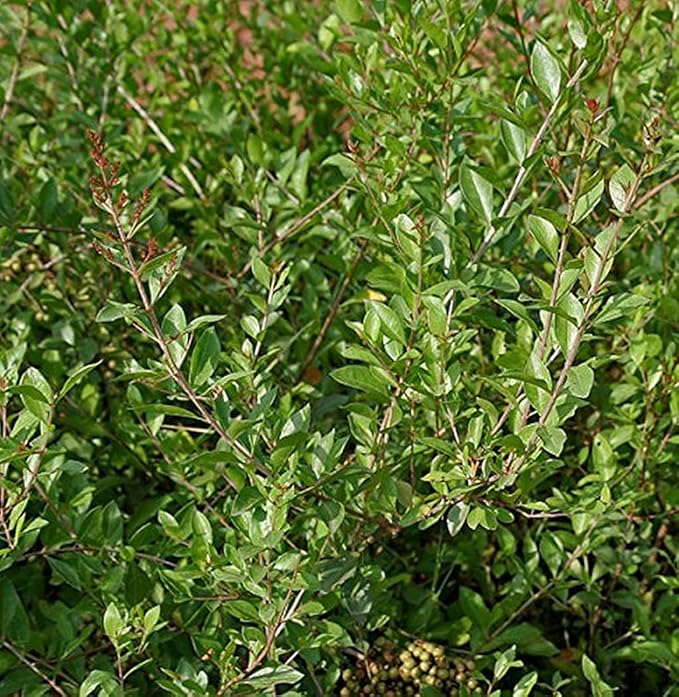

The Mehandi Tree (scientifically known as Lawsonia inermis) is much more than just a source of beautiful henna patterns. This humble plant has been cherished for centuries across cultures, offering a blend of beauty, tradition, and remarkable me Read more
Trending
Trees for Corporates
Mehandi Tree: The Magical Plant Behind Natural Beauty, Tradition, and
You may also like
Corporate Plantations
Mehandi Tree Uses
The Mehandi Tree is nature’s Swiss Army knife, offering leaves for stunning henna designs, roots for herbal remedies, and bark for hair care potions. It’s the ultimate beauty and wellness multitasker.
Mehandi Tree Benefits
Beyond its artistic charm, the Mehandi Tree provides antimicrobial, antifungal, and cooling properties. It’s your go-to solution for skin issues, scalp care, and even soothing headaches.
Mehandi Tree Cultivation
Cultivating the Mehandi Tree is like raising a beauty icon. Thriving in hot, dry climates with minimal care, it grows into a bushy, leaf-rich plant perfect for gardens or farms.
Mehandi Tree Leaves
These tiny green wonders are the star of the show, ground into a paste that cools the skin, strengthens hair, and creates intricate, stain-worthy body art.
Mehandi Tree Medicinal Uses
Ayurveda treasures the Mehandi Tree for its ability to heal wounds, combat infections, and regulate body heat. It’s like a natural doctor in leafy disguise.
Mehandi Tree in Tradition
The Mehandi Tree holds a sacred place in traditions worldwide, from Indian bridal henna ceremonies to Middle Eastern cultural celebrations, where it’s a symbol of joy and beauty.
Mehandi Tree for Hair Care
Forget chemical conditioners; the Mehandi Tree’s leaves create a nourishing paste that strengthens, conditions, and colors hair naturally, leaving it shiny and voluminous.
Mehandi Tree Environmental Impact
Beyond beauty, the Mehandi Tree is an eco-hero. It enriches the soil, purifies the air, and provides shade, proving it’s as green as it gets.
Mehandi Tree Growth Conditions
This sun-loving plant thrives in arid, sandy soils, making it an easy-to-grow, drought-resistant marvel for those with a not-so-green thumb.
Mehandi Tree in Skincare
From acne-fighting masks to cooling compresses, the Mehandi Tree’s leaves are a skincare game-changer, bringing natural glow-ups with every application.
Mehandi Tree History
Dating back to ancient Egypt, the Mehandi Tree has painted history with its crimson hues, adorning pharaohs, queens, and brides with its timeless charm.
Mehandi Tree Cultural Significance
The Mehandi Tree is more than a plant; it’s a symbol of love, beauty, and tradition, linking generations through the art of henna and healing.
FAQ
What is the Mehandi Tree?
It’s the source of henna, a magical plant that offers natural beauty solutions, traditional significance, and medicinal benefits, all wrapped up in vibrant green leaves.
Why is the Mehandi Tree significant in traditions?
From Indian weddings to Middle Eastern festivals, it symbolizes joy, love, and beauty, gracing hands and feet with intricate henna designs.
What are the health benefits of the Mehandi Tree?
Its antimicrobial and cooling properties soothe skin, strengthen hair, and heal wounds, making it a go-to natural remedy for generations.
How do you use Mehandi leaves?
Grind them into a paste for henna designs, hair masks, or skin treatments. These leaves are the ultimate multi-taskers in your beauty routine.
Can you grow a Mehandi Tree at home?
Absolutely! It thrives in warm, dry climates, requires little maintenance, and rewards you with a personal supply of beauty and wellness goodness.
What does the Mehandi Tree symbolize?
It represents love, joy, and transformation in cultures worldwide, linking generations through the art of henna and celebration.
Is the Mehandi Tree environmentally friendly?
Yes! It improves soil fertility, absorbs carbon dioxide, and supports biodiversity, proving that beauty and sustainability go hand in hand.
What are the medicinal uses of the Mehandi Tree?
It treats wounds, cools fevers, combats infections, and soothes headaches. Basically, it’s a natural healer you’ll want in your corner.
How does the Mehandi Tree benefit hair?
It strengthens roots, conditions strands, and adds a natural reddish hue, leaving your hair healthier and shinier with every application.
What is the history of the Mehandi Tree?
Dating back to ancient Egypt, it adorned pharaohs and queens, earning its place as a timeless beauty and healing staple.
What are Mehandi Tree growth conditions?
It loves sunlight and arid climates, thriving in sandy, well-drained soil. A low-maintenance green gem for every gardener’s dream.
Can the Mehandi Tree be used for skincare?
Definitely! Its paste clears acne, cools irritated skin, and leaves a natural glow, proving that beauty starts with nature’s touch.
?
?
?
Most Popular
Connect with us
-
👥 Corporates
If you are looking for:
- 🌲 Tree Plantation Events
- 📊 CSR Projects
📧 corporate@growbilliontrees.com
📞 +91 9699723523
💬 +91 9325931304 WhatsApp (Only)
🕒 Mon - Sat | 10am - 7pm IST
-
🧩 Tree Plantation NGOs
If you are looking for:
- 💰 Financial Assistance
- 🤝 Operational Support
📧 support@growbilliontrees.com
📞 +91 9699723523
💬 +91 9325931304 WhatsApp (Only)
🕒 Mon - Sat | 10am - 7pm IST
-
🌼 Individuals
If you are looking for:
- 👥 Group Tree Plantation Drive
- 🌳 Bulk Tree Plantation
📞 +91 9699723523
💬 +91 9325931304 WhatsApp (Only)
🕒 Mon - Sat | 10am - 7pm IST





















